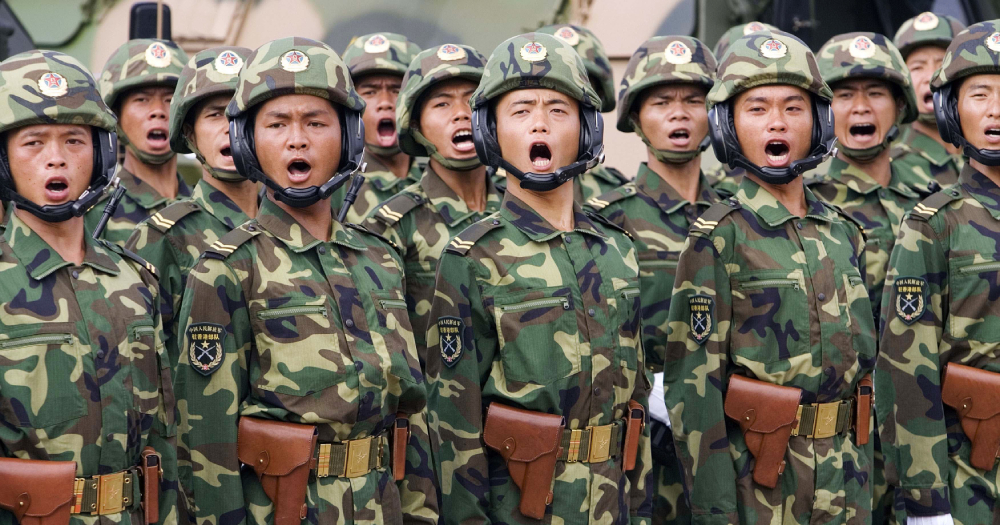An annual report to the United States Congress said that while China is likely to be preparing a plan to take Taiwan by force, it is difficult for it to do so.
The 136-page report, titled "Military and Security Developments Involving the People's Republic of China 2019", was released on May 2, 2019.
It was prepared by the Department of Defense (DOD), and is coordinated with other departments and agencies in the U.S. government, according to a news release by the DOD on May 1.
Many different ways to force Taiwan to reunite with the motherland
According to the report, it will be tough for China to take Taiwan by force as China lacks the core assault landing capabilities required to do so.
The self-governing island is located about 180km off the southeastern coast of mainland China across the Taiwan Strait.
The report, which cites writings by the People's Liberation Army (PLA), said China has "an array of options for a Taiwan campaign" to bring the entity under its control.
It ranges from an "air and maritime blockade to a full-scale amphibious invasion to seize and occupy some or all of Taiwan or its offshore islands".
It goes on to provide details as to how China can conduct these operations.
For instance, a strategy that makes use of an air and maritime blockade can potentially cut off Taiwan's vital imports and isolate it, therefore, forcing it to surrender.
Experts: China will find it hard to conquer Taiwan
Another option is a large-scale amphibious invasion, which the report said is one of the "most complicated and difficult military operations".
The difficulties involved in such an invasion include having air and maritime superiority, being able to sustain the attacks with "uninterrupted support", as well as the "complexity of urban warfare and counterinsurgency".
But that depends on the troops being able to make a successful landing and breakout (military term for "advancing from the enemy's defensive line") in the first place.
While the report said the PLA is capable of taking medium-sized Taiwan-held islands, such as Matsu or Kinmen, accomplishing a full-scale invasion of Taiwan will be challenging.
In addition, Timothy Heath, a research analyst at U.S. think tank Rand, told South China Morning Post that China currently does not have enough number of ships capable of transporting troops for an invasion.
Not a wise move politically
Besides the military risk, such an operation carries political risk too.
The report said an attempt to invade Taiwan would not only "likely strain China's armed forces", but would also "galvanise pro-independence sentiment on Taiwan and generate international opposition", even inviting "international intervention".
China's military is advancing
However, despite current weaknesses in the Chinese military, China could still improve on its military capabilities as long as orders came from the country's top leaders, Beijing-based military expert Li Jie was quoted in SCMP.
The report also noted that "Taiwan's advantages continue to decline as China's modernisation efforts continue":
"The PLA continues to make modest gains in amphibious warfare by developing additional capabilities to conduct amphibious landings and seize and defend small islands."
But to counter China's advancing capabilities, Taiwan is also taking measures to develop new strategies and capabilities for asymmetric warfare.
China has not ruled out military option to "reclaim Taiwan"
China has not ruled out the use of force to take Taiwan under its control.
Chinese President Xi Jinping has reiterated this message earlier in January on the occasion of the 40th anniversary of the issuing of "Message to Compatriots in Taiwan", urging the Taiwanese people to accept that Taiwan "must be and will be reunited" with the "motherland".
He also lauded the "one country, two systems" model as an arrangement that Taiwan can follow.
The model is currently applied on Hong Kong and Macau.
However, critics watching Hong Kong closely have dismissed the idea, saying, "Today Hong Kong, tomorrow Taiwan".
They argue that Hong Kong's autonomy has eroded under the model as the Beijing government is increasingly asserting its authority on the Special Administrative Region (SAR), despite initially promising not to export its socialist system and policies to Hong Kong.
Taiwan remains as one of Beijing's "core interests", which are issues that the party leaders would not compromise on.
Relations between Taipei and Beijing have taken a dip under the Democratic Progressive Party (DPP), after Taiwan President Tsai Ing-Wen refused to affirm the "1992 Consensus", which is a mutual agreement that there is only "one China", although both sides interpret it differently.
Top image via David Paul Morris-Pool/Getty Images
Content that keeps Mothership.sg going
??
Here's how not to get fat while stuffing your face with Hello Pandas.
??
Maybe can steam fish with this and make gr8 ginger recipes.
???
Remember when you had to practice ting xie (Chinese spelling) like there was no tomorrow?
?️?
You probably know "Speak of Cao Cao, and Cao Cao arrives". But did you know he sometimes arrives in a Gundam suit?
❤️?❤️
Hit (on) your friends at a human whack-a-mole here.
If you like what you read, follow us on Facebook, Instagram, Twitter and Telegram to get the latest updates.
